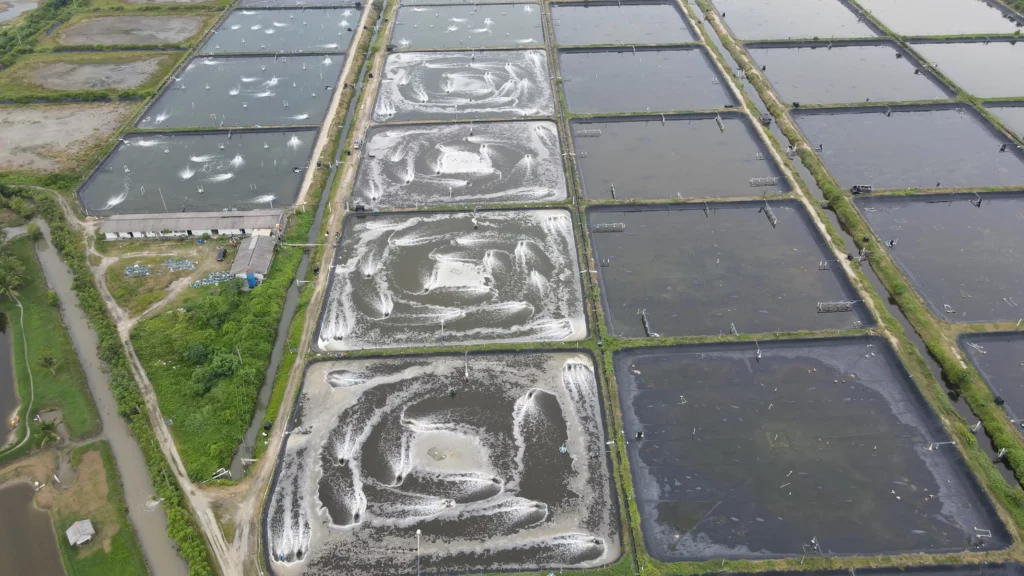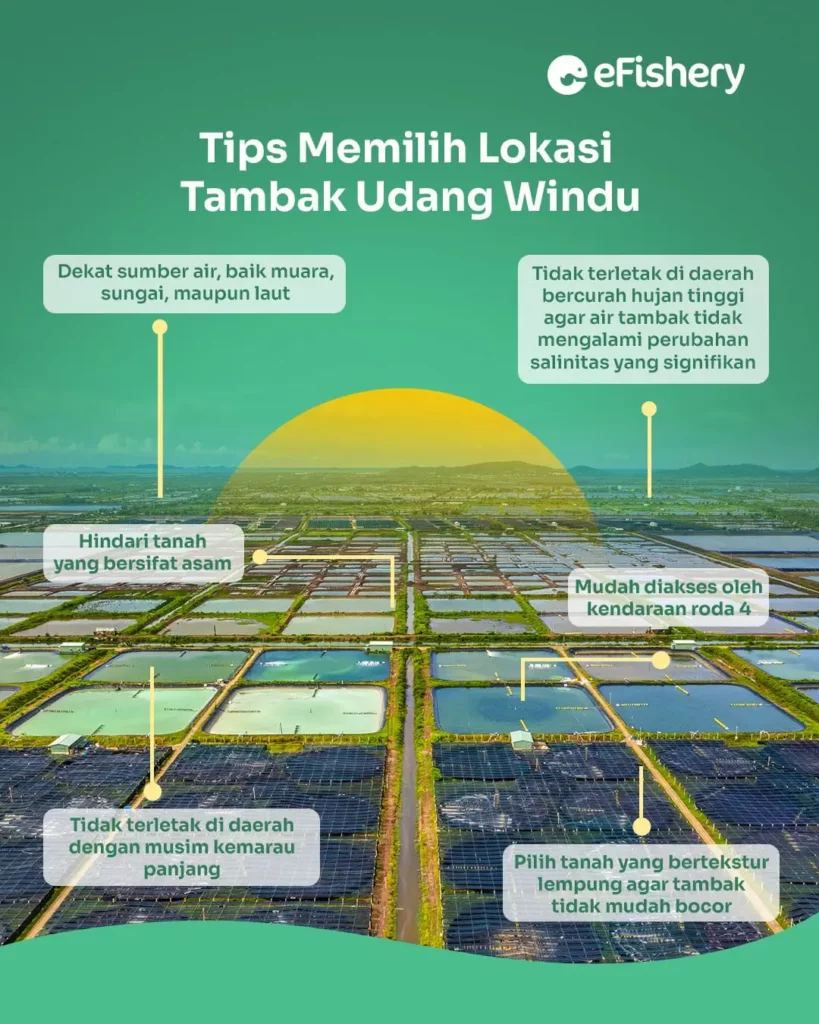Halo, Bapak/Ibu Petambak! Pastinya sudah tidak asing lagi dengan udang windu, dong. Sama dengan udang vaname, udang windu adalah udang yang menjadi komoditas ekspor perikanan nomor satu di Indonesia. Walaupun banyak peminatnya, ternyata belum terlalu banyak Petambak yang berbisnis budidaya udang windu, loh!
Tiger prawns or Penaeus monodon is a native Indonesian shrimp nicknamed as Black Tiger Shrimp. Come on, get to know the black stripe even further in this article!
Characteristics of Tiger Shrimp
Tiger shrimp or better known as the Original Indonesian Black Loreng is a native Indonesian shrimp that has a striped shell like a tiger's color. In addition, shrimp that can grow up to 140 grams when they are adults have hard body shells and have bluish-green stripes.
When young, these shrimp live in shallow coastal waters and will move to deeper waters as adults. With a high content of vitamins, proteins and minerals, tiger prawns are very popular with many seafood lovers.
Tiger Shrimp Business Opportunity
Currently, shrimp is the number one fishery export commodity in Indonesia. There are at least two types of shrimp that are a mainstay, namely tiger prawns and vannamei.
Before vannamei shrimp became popular in Indonesia, tiger prawns were the most superior shrimp commodity. The prestige of tiger prawns had faded due to an outbreak of white spot disease (white spots) that attacks this type of shrimp.
This is because the death rate due to infection with this disease can reach 100% within 2–7 days. As a result, many tiger shrimp farmers at that time switched to vannamei shrimp cultivation until their production surpassed other types of shrimp.
Not many farmers have started tiger prawn cultivation anymore because the cultivation process is difficult. Even though tiger prawn cultivation is more difficult than vaname shrimp, tiger prawns are still a profitable commodity. Market demand for tiger prawns is still very high, although not many farmers produce this type of shrimp. Therefore, tiger prawn cultivation will generate profits.
Apart from selling it directly to the market, you can also sell harvested tiger prawns to meatball factories, nuggets, crackers, shrimp paste, and so on. Behind the good business opportunities, tiger prawn cultivation requires a lot of patience and a lot of patience because the level of tolerance for tiger prawns to disease is very low.
How to Cultivating Tiger Shrimp

To produce healthy and quality tiger prawns at harvest, let's read how to cultivate them below!
1. Pond Preparation
In the preparation stage, the first thing you should pay attention to is the location of the pond. Strategic pond locations can be a plus in the smooth cultivation. The following are things that must be considered in choosing a pond location:

After the pond location selection stage is complete, it's time for you to prepare the pond so that it is ready to be filled with water. Before the pond is filled with water, you should clean the mud that has settled at the bottom of the pond. This is done because the mud contains toxins that are harmful to shrimp.
Mud can be removed with a hoe or a special suction tool. Next, you can plow the bottom of the soil to remove toxic gases and ammonia from the soil. Pond soil should be left for 3 days before filling with water.
After 3 days, you can irrigate the pond 10-25 cm high and pour Zeolite and Dolomite lime. This lime will later function to neutralize soil acidity, kill seeds of disease, and fertilize plankton which will later become natural food for fry. Finally, you can irrigate ponds with a minimum height of 80 cm.
2. Selection and Spread of Seeds
Before buying seeds at the store, make sure the seeds have passed the test Polymerase Chain Reaction (PCR). Seeds that have passed the PCR test have high resistance, are free from disease infections, and are healthy. Visually, the following are the characteristics of shrimp seeds that have passed the PCR test:
- Clean brownish green (no red)
- Uniform size
- The tail (uropod) is open
- Swim against the current
- Have complete limbs
- Clean from basic pathogens (according to SNI tiger prawn seeds)
If you have confirmed that the seeds you have chosen are in good health, it is time to spread the seeds into the pond. Before stocking, fry should go through a temperature adaptation process first so they don't get stressed.
Adaptation is done by placing the fry in a plastic bag with water at 22 degrees Celsius and floating them on top of the pond water. This process is considered sufficient when the fry in the bag are already swimming actively.
After that, you can replace the water in the bag with pond water and let it sit for 15 minutes. When the process is complete, slowly pour the fry from the bag into the pond.
3. Feeding
The most important thing in triggering shrimp growth is regular feeding. Tiger prawns can be given natural or artificial feed.
Natural food for tiger prawns can be plankton, moss, even the remains of animals and plants that have rotted in ponds. To trigger the growth of plankton in the pond, sprinkle urea and compost.
In addition to natural feed, shrimp also need artificial feed such as pellets. You can provide factory-made pellets whose nutritional content has been regulated. Giving pellets can be done 2 times a day in the morning and evening.
Tiger prawns should be given additional food again when they reach the age of 3 months. Additional feed can be in the form of bran mixed with snails, snails, or finely chopped fish.
4. Harvest tiger prawns
The ideal weight for harvesting tiger prawns is around 140 grams per head. To reach this size, fry takes 5-6 months.
Usually harvested shrimp will look fresh, have complete body parts, hard skin, clean, smooth, and shining. You can harvest tiger prawns by using nets spread all over the pond at night or early in the morning.
This is done to avoid the sun which can make the shrimp not fresh anymore. After that, the shrimp can be soaked with ice cubes so that the quality is maintained when it reaches the buyer.
Check Tiger Shrimp Cultivation Tips on eFarm
Need Help Regarding Shrimp Cultivation Business?
Fill in your personal data in the following form. Our team will immediately contact you via the number cellphone attached. Make sure the data entered is correct.
Are you ready to start tiger prawn cultivation after reading this article? If you want to find more complete and more information, you can find it in the application eFarm from eFishery through features Learn Cultivation.
Not only information about tiger prawn cultivation, in eFarm You can also find other information about shrimp farming. What are you waiting for? Direct downloads application eFarm on the Google Play Store!
- https://kkp.go.id/an-component/media/upload-gambar-pendukung/DJPB_BBPBAP%20JEPARA/FULL-UDANG%20WINDU.pdf
- http://awsassets.wwf.or.id/downloads/bmp_budidaya_udang_windu_2014.pdf
- https://bukukas.co.id/peluang-usaha-dan-tips-penting-budidaya-udang-windu/
